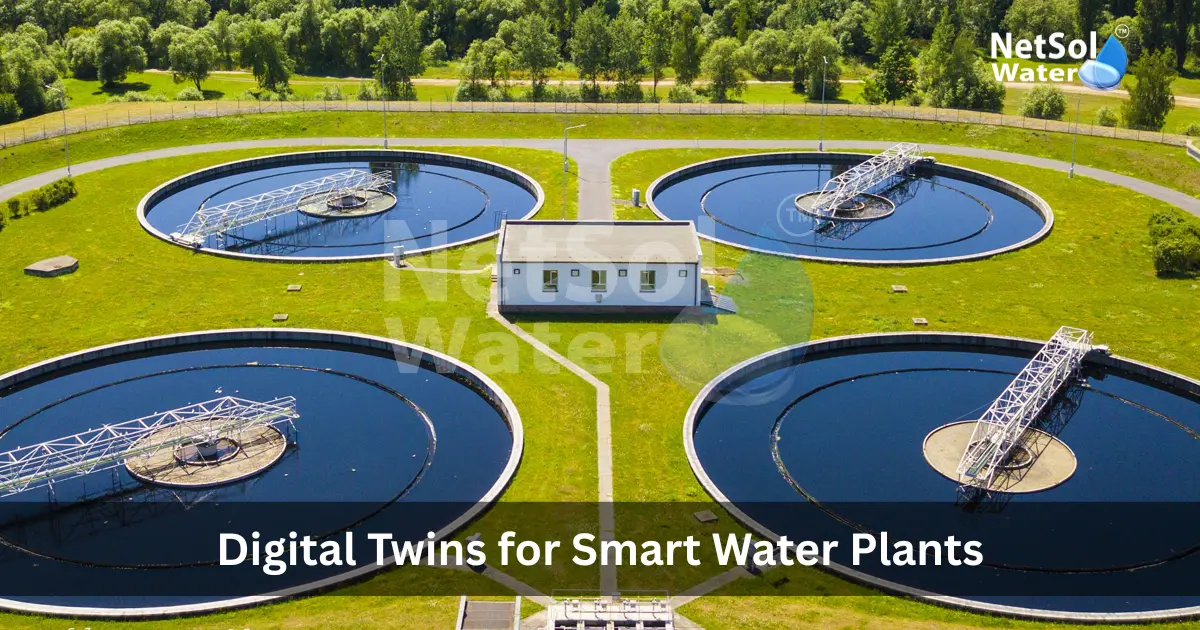
Digital Twins for Smart Water Plants
Smart water plants must adapt to meet growing water demands. Digital twins empower water utilities to enhance their operations by creating virtual replicas of physical systems. The technology produces exact digital copies of water treatment facilities which enables operators to test scenarios without affecting actual operations. Water plant managers deploy these virtual models to identify problems early and enhance decision-making processes.
The water industry encounters mounting challenges from population growth, environmental changes and ageing infrastructure. Digital twin technology empowers water utilities to address these challenges by delivering real-time insights into plant operations. This advanced modelling enables operators to comprehend system behaviour under various conditions. Operators can experiment with new processes, evaluate performance, and schedule maintenance activities while maintaining uninterrupted plant operations.
Digital twins establish connections between physical water treatment systems and their virtual counterparts through sensors and data analytics. This connection provides operators with a comprehensive overview of their facility’s performance. Water utilities across the globe implement digital twins to enhance operations, minimize costs, and upgrade water quality. The technology advances as more water treatment plants discover its potential for building efficient sustainable operations.
Digital Twin Architecture in Water Plants
Digital twin architecture establishes the foundation for smart water plant operations. A well-designed digital twin system obtains data from multiple sources throughout the water treatment process. The architecture incorporates sensors monitoring devices and control systems that collaborate to build an accurate virtual model. Let us examine the key components that make up digital twin architecture:
Data Collection Systems: Modern water plants deploy various sensors to obtain information about water quality flow rates and equipment status. These sensors transmit data to the digital twin platform continuously. The system transforms this information to generate real-time updates of plant operations.
Integration Platform: The integration platform links different components of the water treatment system. It coordinates data flow between physical equipment and the virtual model. This platform ensures effective communication between all components and upholds data accuracy.
Visualization Interface: Operators need intuitive methods to interact with digital twin data. The visualization interface presents complex information in accessible formats. It displays 3D models dashboards and performance metrics that guide operators toward informed decisions.
Benefits of Digital Twins for Water Plant Operations
Digital twins deliver substantial advantages to water treatment facilities. These virtual models enable plants to function more efficiently and provide enhanced service to their communities. The technology transforms how water utilities handle their resources and prepare for future demands. Let us explore the main benefits of implementing digital twins:
- Improved Decision Making: Water plant operators employ digital twins to simulate various scenarios. They test different operating conditions and observe the outcomes before implementing changes to the actual system. This capability guides them toward optimal solutions for specific challenges.
- Predictive Maintenance: Digital twins examine equipment performance patterns to forecast maintenance requirements. This approach prevents unexpected breakdowns and extends equipment longevity. Plants schedule maintenance during optimal periods to minimize operational disruptions.
- Resource Optimization: The technology enables water plants to maximize resource utilization. Operators adjust treatment processes according to changing conditions. This optimization decreases energy consumption and chemical usage while maintaining water quality standards.
Implementation Strategies for Digital Twin Technology
The successful implementation of digital twin technology demands thorough planning and execution. Water utilities must address various factors to ensure their digital twin systems fulfill their requirements. The implementation process encompasses multiple steps and stakeholders. Let us review the essential aspects of implementing digital twins:
1. Assessment and Planning: Water utilities begin by examining their current systems and establishing clear objectives. They determine which processes will gain maximum benefit from digital twin technology. This assessment shapes a detailed implementation plan that addresses specific needs.
2. Data Management Framework: A comprehensive data management system supports digital twin operations. The framework handles extensive data from multiple sources efficiently. It processes this information promptly and maintains data integrity.
3. Staff Training Programs: Employees require thorough training to operate digital twin systems effectively. Training programs empower staff to understand the technology and maximize its potential. This knowledge enables them to extract maximum value from digital twin implementation.
Take action for Better Water Management:
Contact us today to discover how digital twin solutions can enhance your water treatment facility. Our team will guide you through the transformation potential of this technology for your operations. We provide customized consultations to understand your unique requirements and develop a targeted implementation plan for your facility.
To explore customised commercial RO plants, Industrial RO plant, ETP or STP solutions for your needs in your areas and nearby regions, Contact Netsol Water at:
Phone: +91-965-060-8473
Email: enquiry@netsolwater.com
